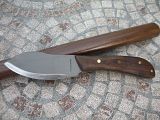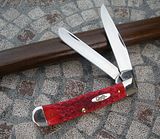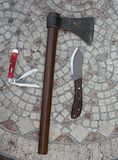I was wondering with all you testing of assault rifles, which one would you chose if given the choice, " I can have only one" ?????
First, to be pedantic, an "assault rifle" is a select fire rifle which fires an intermediate power cartridge. However, in modern American vernacular the term has come to mean a military style semiautomatic rifle. The meat of my answer follows:
It's not an easy question to answer. Pretty much off the bat I'd narrow my choices down to an AK, an AR-15, and M-1 Carbine, or a VZ-58. Rifles like the FAL, CETME, or G3 are great pieces but I'd want something lighter.
I think at this time I'm leaning towards a Kalashnikov with the following features:
1. Chambered for 7.62x39. With softpoints it offers better terminal ballistics on either criminals or medium game than 5.45x39 or 5.56x45. Ammo is plentiful and cheaper than 5.56, though military surplus 5.45 is the cheapest available centerfire rifle ammo.
2. Folding stock, for storage and transport. I have AKs with fixed stocks, an Ace folder, an East German folder, a Tapco T6 M4-style stock, and an underfolder. The Ace is the most comfortable of the folders but the E. German folder is probably the most robust. A regular fixed stock is the best for comfort and durability. (An exception for me are the Yugoslav fixed stocks. The comb is too high for me to shoot them comfortably.)
3. A flash suppressor. This is mostly to protect the shooter's night vision, not so much conceal him from anyone else. The Norinco Type 84 flash hider seems to work well. Muzzle brakes reduce recoil but greatly increase blast and flash.
4. A red dot sight. My eyes ain't getting any younger and one area a factory stock AK lacks is in the sights. They are OK at short range but suck for work beyond 100 yards. Worse, they are hard to see in low light. Also, if for some reason I don't have my glasses then I can hardly see the iron sights even under perfect conditions. The Combloc side mounts work well but most of them place the optic too high for a good cheek weld. Tonight I installed an Ultimak on my SAR-1 and mounted a Bushnell TRS-1 RDS. This setup is light and mounts the optic so that it cowitnesses with the irons. I.e., I can use the iron sight through the RDS if the latter dies.
5. A milled receiver is nice but not a must-have. In my experience, a milled receiver rifle just feels smoother and more solid than most rifles with a stamped receiver. On the other hand, my Yugo underfolder with a 1.6mm stamped receiver feels as solid as my milled Bulgarian rifles. For some reason my MAK-90 which also has a 1.6mm receiver doesn't feel quite as solid.
6. Plastic handguard with a steel heat shield, like those from K-Var. All you have to do is fire off a couple magazines in quick succession to understand why. Wood handguards, or plastic without a heat shield can get so hot you can't even hold them.
The main reasons for choosing an AK over an AR-15 is ease of maintenance and long term durability. AR-15s are reliable rifles but have a lot more parts, some of which are small, and overall the rifle requires more maintenance. Also, an AR-15 can be rendered inoperable if the buffer tube gets dented or bent. An AK could be made inoperable with damage to the gas tube but it's easier to replace than the AR's buffer tube. That said, the AR-15 has better ergonomics and is generally more accurate, often quite a bit more accurate.
For decades the AK had one big advantage over the AR-15/M-16 in the magazine department. Aluminum AR-15 magazines are about as robust as a soda can. As far as I'm concerned with the advent of the Magpul P-Mag it's now a wash.
My Century Arms VZ-2008 (VZ-58 clone) has turned out to be a reliable piece, after a break in period. My reason for not choosing it is that at least in the US, it's still a bit of an oddball, with comparatively limited access to spare parts or magazines.
Other rifles like the Robinson Arms XCR or the MSAR STG-556 are quality arms but like the VZ-58, spares could be an issue unless you stocked up in advance.
I'm a big fan of the M-1 Carbine. In my experience they've been reliable and they are certainly fun to shoot. However, they are 100 yard guns and .30 Carbine ammo is no longer as plentiful or cheap as it once was. And while .30 Carbine JSPs by all accounts work extremely well on bad guys, it's a marginal round for any game animal larger than a coyote. So, if it came down to having only one semiauto rifle, I'd have to pass on an M-1 Carbine.
Of course, I reserve the right to change my opinion at any time. :-)















